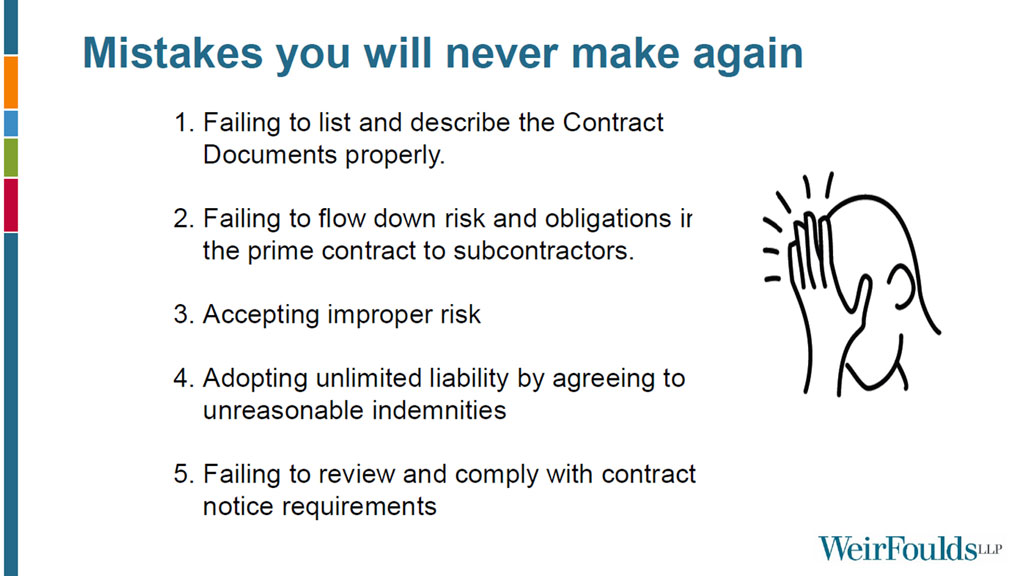Contractors expecting the introduction of the new CCDC 2020 contract to lead to a new era of seamless, problem-free contract negotiations with owners have another thing coming, a panel of lawyers assembled for an online WeirFoulds session said recently.
CCDC 2020 offers significant updates to CCDC 2008, being phased out this year, in particular introducing new sections dealing with prompt payment, launching new ready-for-takeover rules and updating insurance requirements, but since CCDC documents can’t be edited, there are still going to be numerous supplementary conditions tacked on to the contracts.
And as WeirFoulds lawyers Faren Bogach, Krista Chaytor and Jeff Scorgie pointed out at the April 15 session, construction contracts can always be a minefield for unsuspecting contractors and imprudent lawyers.
“The CCDC contracts are a standard form. They’re a good starting point, but you know owners are still going to be customizing them at the end of the day,” said Scorgie.
“I think that the takeaway from this presentation is that you really need to review them carefully, even if they’re not open for negotiation, even if it’s a tender or it’s an RFP but they’re stating that the contract is kind of take it or leave it, you still want to review them. You still need to know what you’re getting into.”
The session was the second of six in the WeirFoulds Tools for Success series. WeirFoulds invited Walsh Canada general manager Tim Meana to weigh in and Chaytor asked him what red flags he looks for when he sits down to review a proposed contract.
From the onset, Meana said, the deal has to be fair and the circumstances have to be right as he debates “go, no go.”
“On that go, no go, we look, is it a new owner we have never worked with, new designers, have we worked with them, and is it a new region.
“Other factors are the length of the project. Insurance-wise, there is a whole different market. If it starts creeping over two to three to four years, that long a project really affects your insurance perspective, and you really have to understand how that impacts your risks. Also, we do an overall risk assessment of the contract.”
Chaytor said key considerations for owners drawing up a contract include balancing competing concerns, such as protecting themselves from risk versus drawing up a lopsided contract that scare bidders off; and considering the pros and cons of making the form of contract subject to negotiation.
Considerations among many for contractors include scouring the contract for onerous clauses; being aware of overly broad indemnity; and avoiding being taken advantage of on clauses related to site conditions.
“In reviewing contracts, it’s just become completely standard almost for these clauses to get slipped in,” Scorgie said of clauses that “deem” that a thorough site visit has been undertaken.
“Then they usually have a nice sentence after that that says that you are again deemed or assumed to have discovered or that you’re aware of all the different site conditions, soil conditions, location of utilities…So essentially what that means is if you encounter those things, you’re not entitled to additional costs or additional time.”
Another important issue to consider is whether damages are capped or there is wording calling for consequential damages, Meana said. The latter can become exorbitant in some circumstances, he explained.
Bogach said, giving an example of a late student residence job, “That could be a huge number.
“People can put all sorts of things into this consequential damages bucket, and you have to sift through it later.
“So in that sense having clarity is good.”
Scorgie said even under CCDC 2020, owners will still tend to include such supplementary conditions as enhanced schedule obligations; proper invoice submission procedures; deficiency correction measures; maintenance, deficiency or warranty holdback provisions; removal of construction liens; modified dispute resolution clauses; expanded indemnity obligations; COVID-19; and measures dealing with Ontario’s new Excess Soil Regulation 406/19.
The bottom line, Chaytor said, is take the time to go through all contracts thoroughly: “How do you make the prime contract work for you?”
Follow the author on Twitter @DonWall_DCN.







Recent Comments
comments for this post are closed